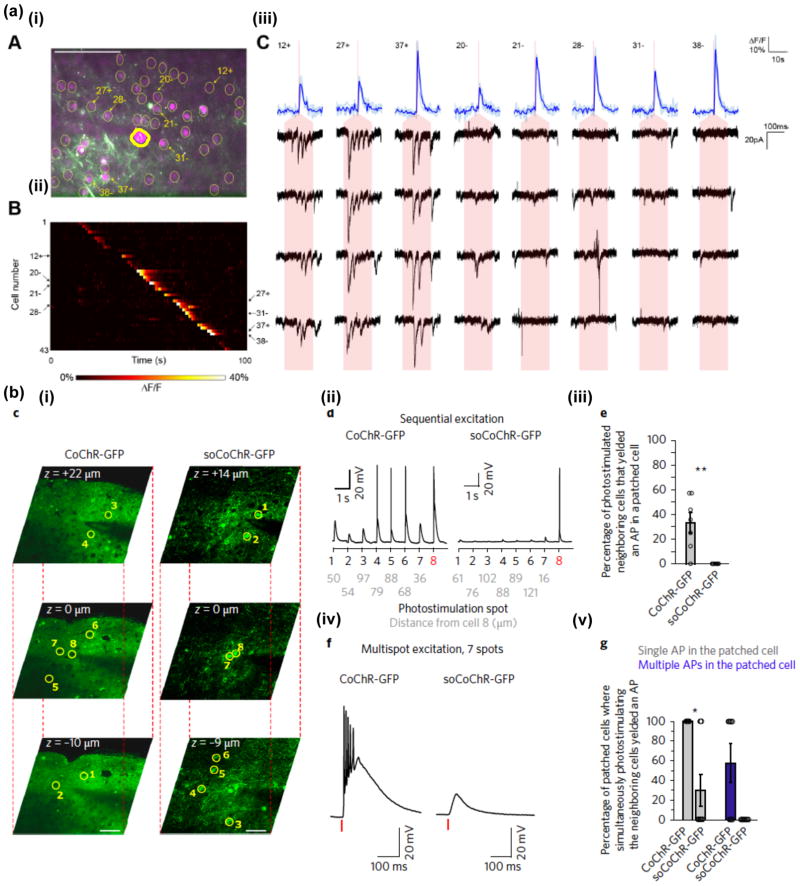Figure 1. Spatiotemporal light-shaping.
(a) Experimental scheme for microscope-implementation of Computer-Generated Holography (CGH). A laser beam is expanded (lenses L1, L2) to fit the SLM array size. The SLM is then imaged through lenses L3, L4 at the back focal plane (BFP) of the microscope objective (OBJ), and thus conjugated to the BFP (BFP*). Arbitrary intensity patterns are projected at the objective front focal plane (FFP) by phase modulation of the illumination beam at its BFP by means of the SLM. A user-defined pattern, usually based on a fluorescence image of the sample, is transformed to a binary image used as the input for the iterative-Fourier transform based algorithm (inset, left). The output of the algorithm is then a gray-scale image where each gray level is associated to a phase delay φi ranging from 0 to 2π (inset, middle), and this consists the phase profile addressed to the SLM; a speckled holographic-based intensity distribution is generated at the FFP (here visualized by two-photon excitation of a thin fluorescent layer (inset, right). (b) Experimental scheme for microscope-implementation of Generalized Phase Contrast (GPC). Here, the SLM is conjugated to the objective FFP (FFP*) through lenses L3, L4, L5 and the OBJ. Arbitrary intensity patterns are obtained by generating a binary input image again (inset, left), which is directly transformed to a binary (0, π) phase profile (inset, left) and addressed to the SLM. A Phase Contrast Filter (PCF) placed in a BFP* plane, introduces a π-phase shift between low- and high-spatial frequencies (highlighted, respectively, as red and light red in the figure) of the focused light, after being diffracted by the SLM. The binary image of the user-defined pattern is in this case transformed to a phase image encoded for 0/π phase shifts and it is addressed to the SLM (inset middle). The output of the GPC method is then a uniform intensity distribution corresponding exactly to the phase pattern addressed to the SLM, generated at the focal plane of lens L4, which is conjugate to the objective FFP through L5 and the OBJ. (c) Temporal focusing of ultrashort pulses. In the spectral representation shown here temporal focusing can be interpreted by the in-phase recombination at the objective focal plane of the spectral frequencies comprising the ultrashort pulses of the input laser beam (beam incident onto the grating at an angle α), after their dispersion on the diffraction grating. Images adapted from Ronzitti et al.25

